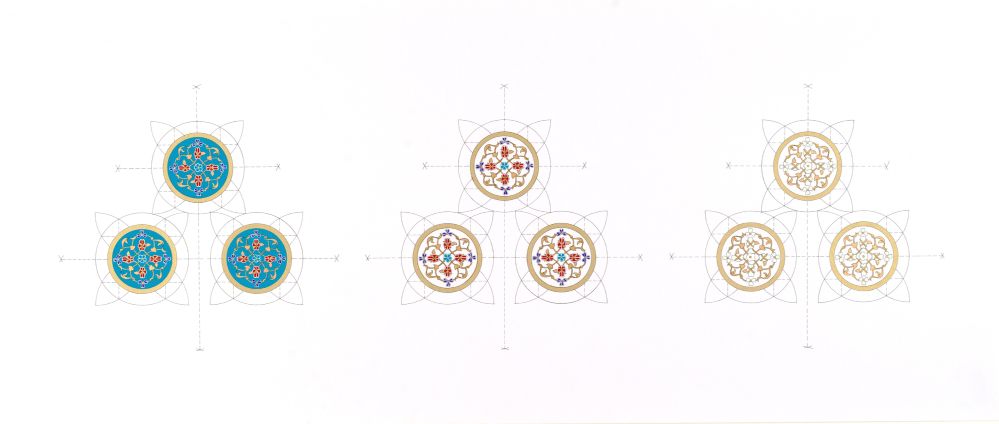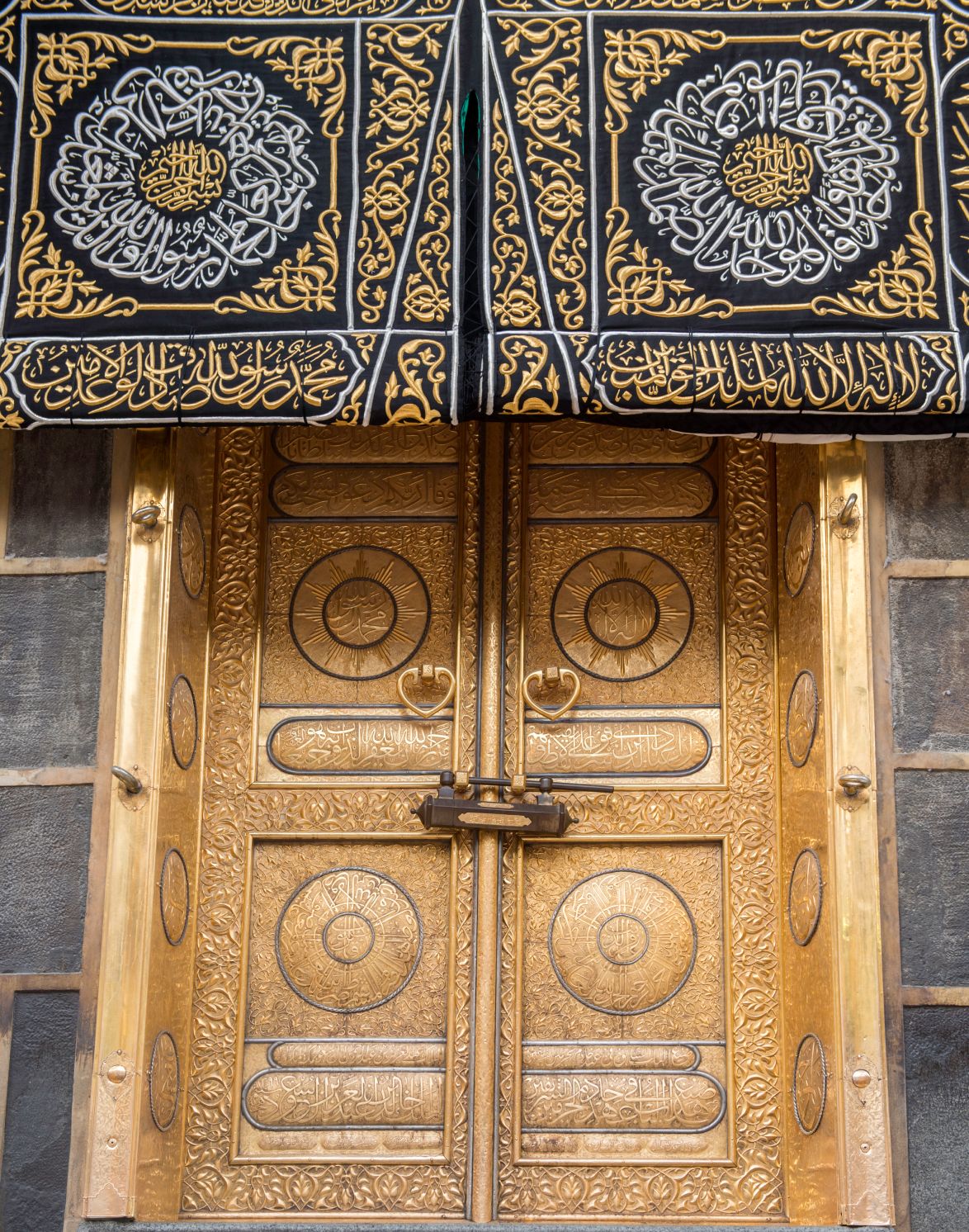Gold & Golden
Asmahan (2021) by Hamza Lafi. Courtesy of the artist.
Oh why the golden age speaks to him artistically, “Through our golden age, we are able to open a window to the world and show our ancient civilisation and it’s gloriouness that has a positive reflection on our present day... The artists of the golden age built the cultural pillars and the fundamental art of our current society. They have created the foundation of art which is still inspiring to this day... I make my paintings visual and audible as my father had Alzheimer and my pieces gave him the ability to enjoy music and the art in the same way as I and everybody does.”
Is it a moment in the past? Are the moments in cultural history truly golden or is it a nostalgic feeling we associate with the past? The Golden Age is meant to be a time period where everything produced had an impact and was considered so valuable to the cultural industry that we consider it gold. We are sometimes too attached to the past as if we cannot create something truly amazing and awe-inspiring in our present day and age, as if the future does not hold surprises we have yet to discover. Thinking of how we glamorize the past, will the future generations glamorize our present creations?
The question we leave you with: Is the Golden Age truly behind us or is it yet to be defined?
A few sectors to reflect upon:
Cinema, as an art form, lends itself beautifully to multi-faceted storytelling. The nature of the medium, and its novelty, made it an exciting choice for Arab storytellers, whose love for spinning the yarn runs deep, when it first arrived in the late 19th century. Starting from its humble beginnings, with only a few silent films made, came the boom of the 1940s-1960s, now known as the Golden Age of Egyptian Cinema. These star-studded films, with stories told through Arab voices, had great appeal and were exported across the region. At its height, Egyptian cinema seized the collective imagination of the Arab world, created a shared cultural experience, and captured the zeitgeist.

The Great Clown (1952), Dir. Yousef Shaheen.

Alandaleeb Alasmar, Abdel Halim Hafez (2021) by Abdulmjed AlOtaibi. Courtesy of the artist.
In fact, in the 1950s the Egyptian film industry cemented itself as the world’s third largest. So, in a sense, it was the Middle East’s answer to Hollywood— it was Hollywood on the Nile, where stars were born and movie magic was made.
For these reasons, among many, it is not hard to see why the bygone era of Faten Hamama, Leila Mourad, Omar Sharif and Youssef Wahbi is fondly remembered and ingrained in the collective consciousness.
Kuwaiti, Palestinian, Lebanese, and other Arab film and TV industries had their moments in the sun as well, and continue to do so via new mediums like Netflix and other online streaming platforms. But the Egyptian golden era remains one of the brightest. It truly was golden, in every sense, that it might seem daunting to recapture the lightning in a bottle. However, it will serve as the foundation on which the next Golden Age of Arab cinema can build itself at the hands of the newest generation of storytellers. —A.A.
“The writer interweaves a story with his own doubts, questions, and values. That is art,” said Naguib Mahfouz, from Egypt, who remains the only Arab to win the Nobel Prize for literature (in 1988).
Arabs have always been eloquent. We have always had a story to tell from pre-Islamic (Jahiliyah) time, especially through poetry, all the way to the contemporary production of memoirs and narratives. Those who think that 1,001 Nights is peak Arabic literature have not truly read or experienced what is considered a good story to Arabs, let alone great.

The Kamin Stories (2015) by Muhannad Shono
However, to pinpoint a certain point as the Golden Age is very difficult, especially since we have always excelled in poetry over books. Many might argue that the Golden Age of Literature was during the Islamic Golden Age, Ummayad to the Andulusian eras, ignoring the fact we had a well known saying in the mid to late 20th century that went: Cairo writes, Beirut publishes, Baghdad reads.
Production of narratives in all forms hasn’t stopped, and will never stop so how do we decide? One of the spaces that could truly embody the values of golden literature would be Al-Mutannabi Street in Baghdad lined with
bookstores and stalls, named after the famous 10th century poet Al-Mutannabi.
The other spaces include Dubai's Museum of the Future, where its facade of windows is a canvas for the poetry of His Highness Sheikh Mohammed Bin Rashid Al Maktoum, the Prime Minister and Ruler of Dubai, beautifully rendered in the calligraphy of artist Mattar bin Lahej. The various book fairs in the region also prove that the golden age is ongoing with certain writers and creatives being celebrated and remembered more than others. What makes some more famous than others? That is a question worth pondering. — H.A
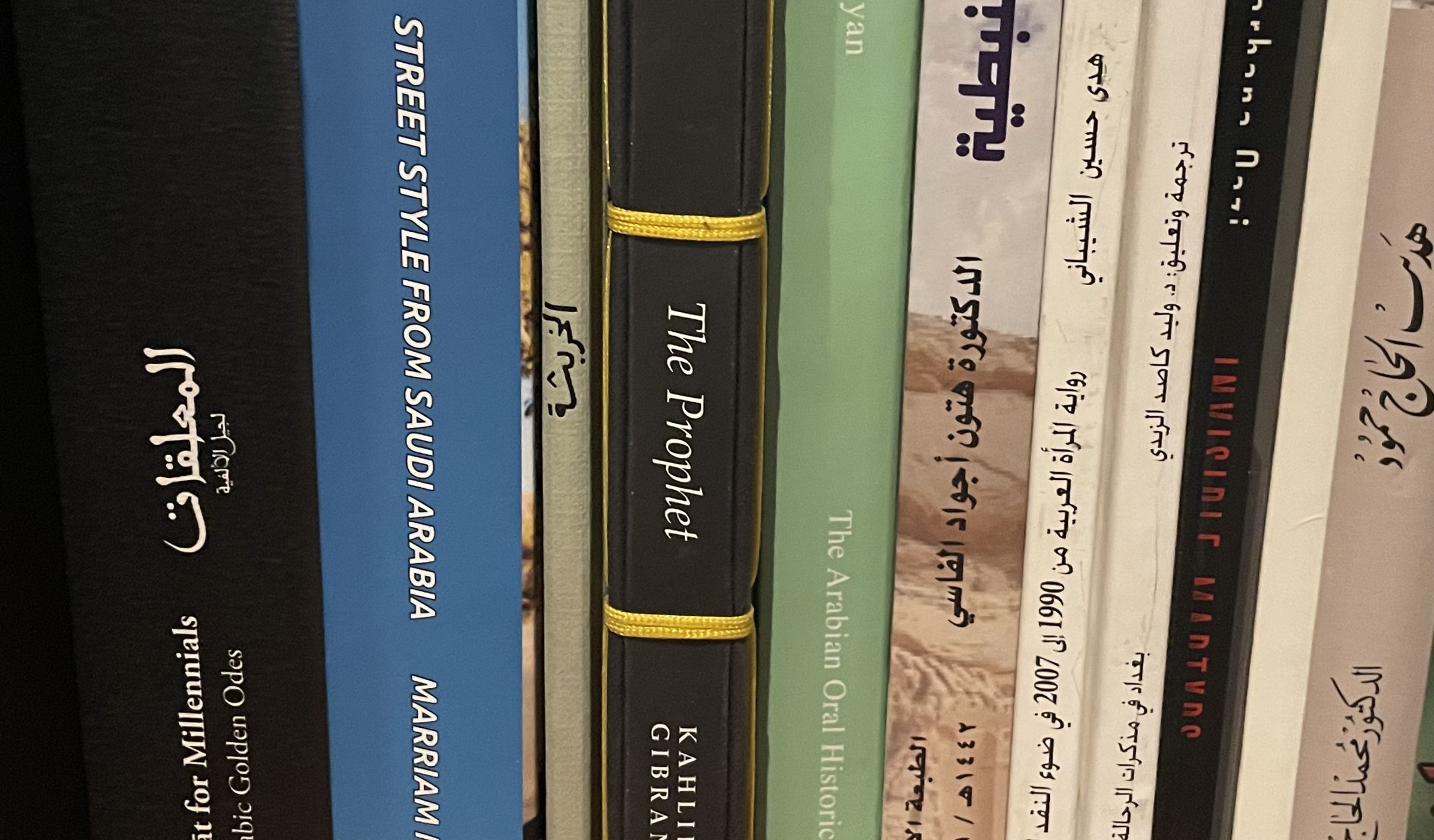
A selection of Books by Arabs courtesy of Hafsa Alkhudairi’s personal library.
Ever evolving, with new movements, new concepts and cultural revolutions popping up, can we still call the old masters, masters? The beautiful classics, modern, post-modern, and contemporary art are so important to our canon. So what is the golden age of art?
There was a huge movement of modernist artists in the Arab world from Dia Al-Azzawi, Mahmoud Said, to Ayman Baalbaki and Tagreed Darghouth, including Abdulhalim Radwi, Abdulrahman Al-Sulaiman, Mohammad Al-Saleem, Safeya Binzagr, Mounirah Mously and many others who paved the way for art in Saudi Arabia.
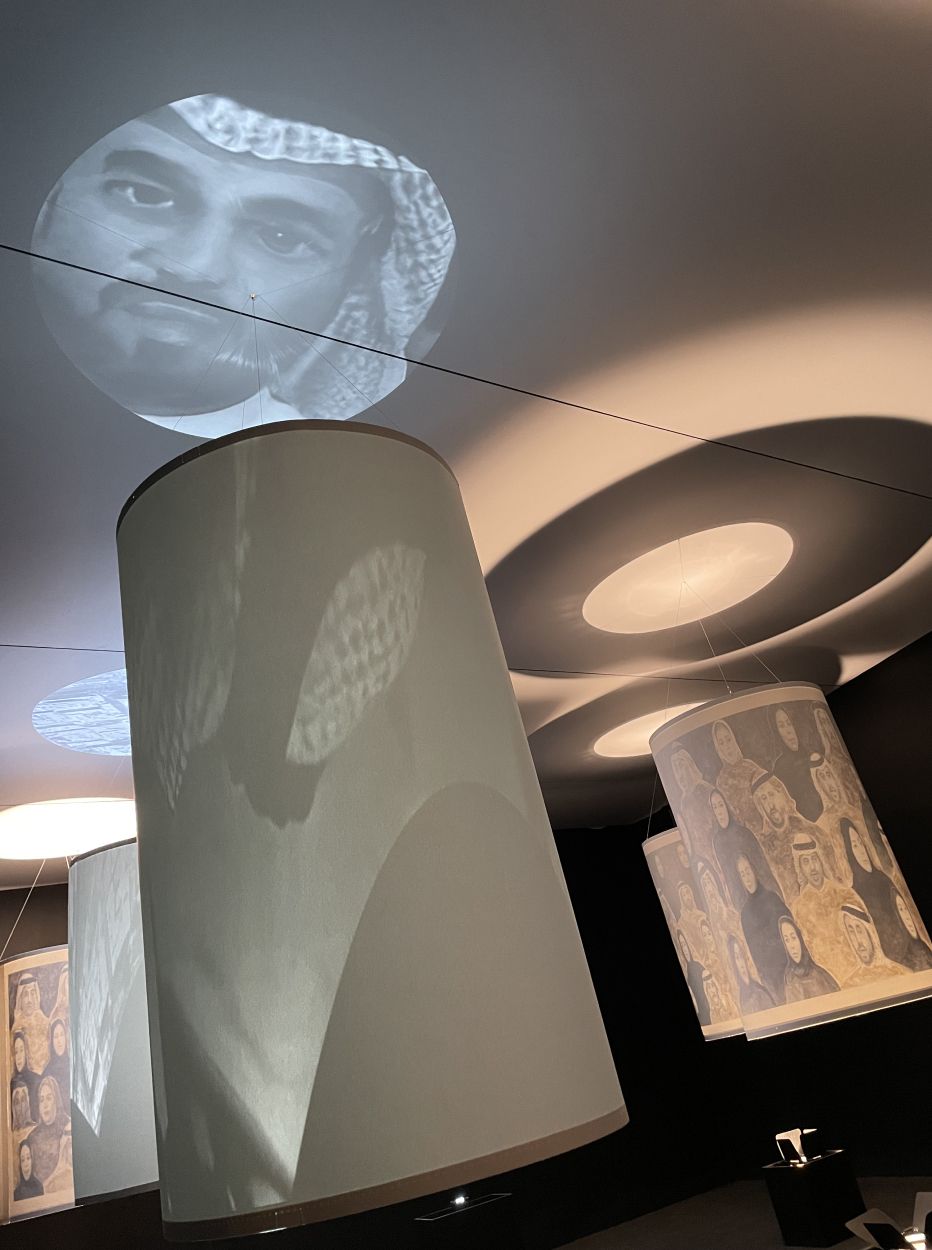
That Which Remains (2021) by Daniah Al-Saleh
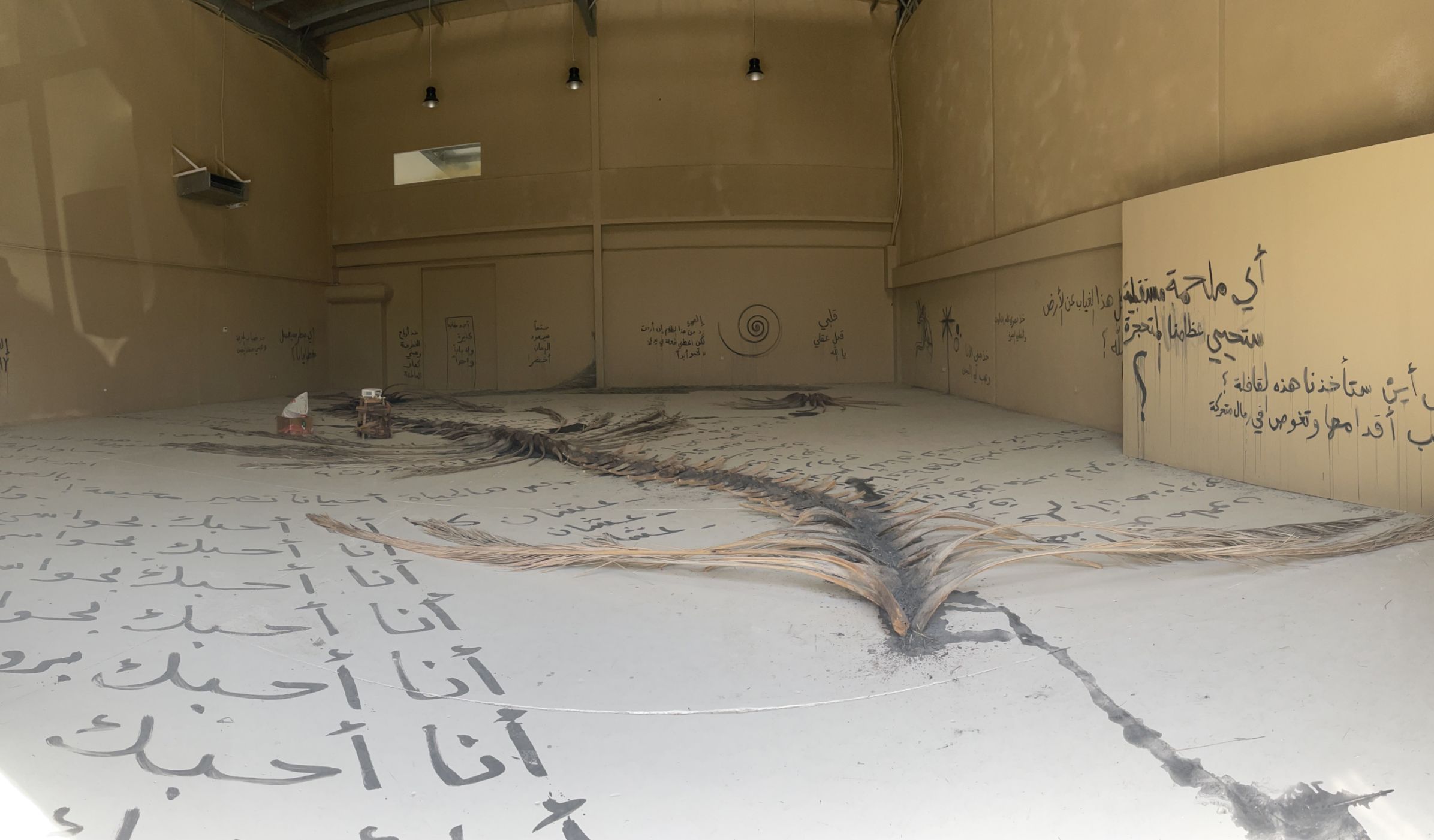
Extremities of the Past, a Sacrifice for the Future (2022) by Mohammed Alfaraj
These artists are legendary, but are they the true starting point of art in the region? The beautiful Egyptian pictographs, the fascinating Nabatean pieces, and the numerous rock art along the region's mountainous terrain, are perhaps some of the far earlier creative endeavors inspiring us still today. Do they represent eras of the Golden Age of art?
Art is such a fluid concept and the sheer amount that has been produced in Saudi Arabia and the region in the past few years show that the contemporary movements should not be trivialized, especially the performance, the experiential, and collaborative arts. This great revitalization of the industry shows that we might be on the verge of a new golden age. — H.A.
The Golden Age of Arab music can be instantly characterized by the swelling orchestras and crooning vocals of icons such as Umm Kulthum, Asmahan, Fairouz and Farid Alatrash, featured in songs and musical films from the 1950s and 1960s. There is the timeless strumming of the oud in the songs of giants such as Talal Maddah, Mohammed Abdu and other legendary figures in the Arab world.
The music and artists from this era have had an immeasurable impact in the region that can be felt to this day, in both an artistic and cultural sense. It was, no doubt, a golden age in every way.
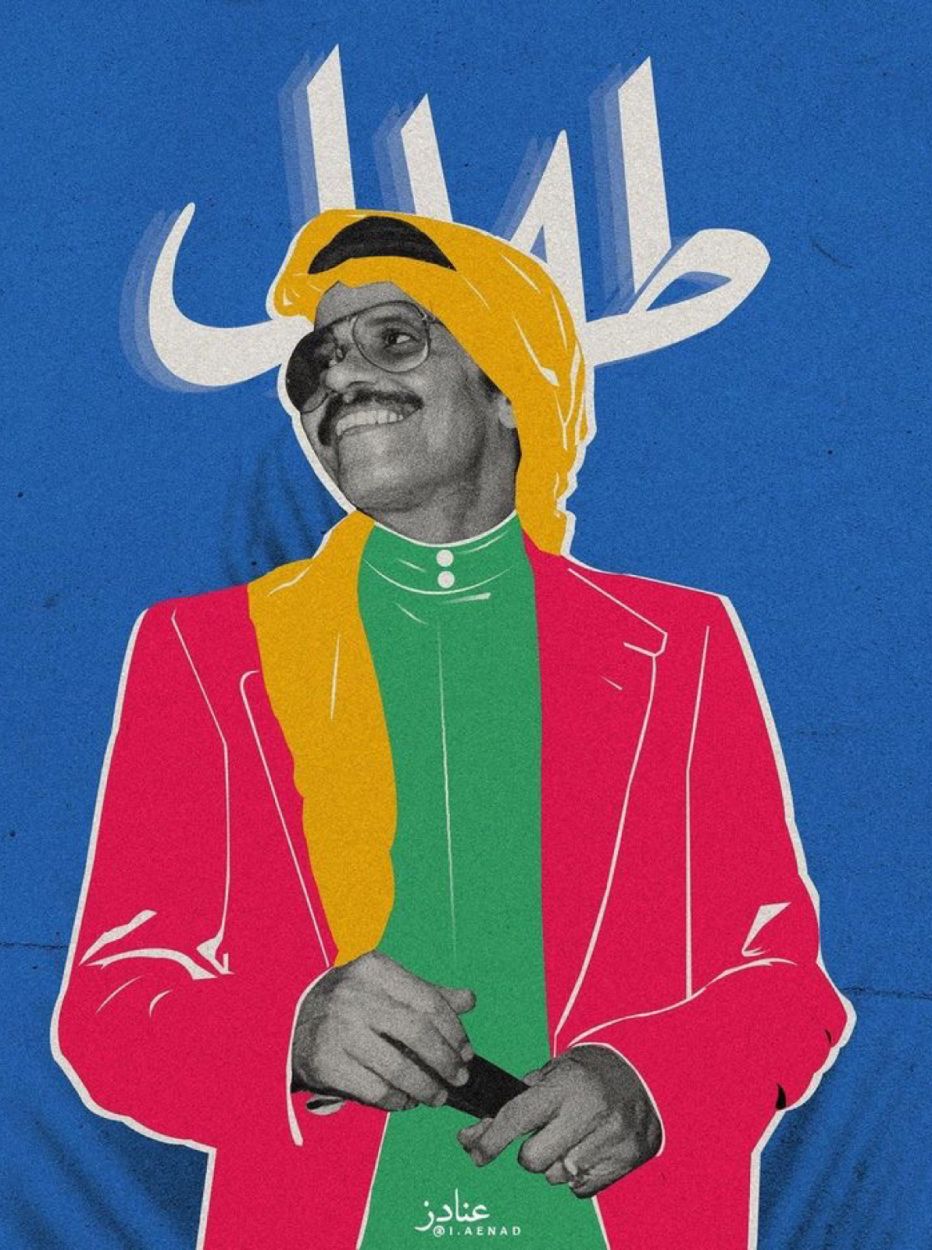
The Earth’s Voice, Talal Maddah (2021) by Abdulmjed Al Otaibi. Courtesy of the artist. On why his art focuses on this era, “The golden age of Arabic music has always been a reference for artists and listeners over the years and generations.. Through these artworks, I express my admiration for that era and those who contributed to it.”
The rise of streaming platforms and the strides in technology birthed a globalized village and has largely affected how music is consumed, experienced and even distributed. This universal, non-geographically restricted online world makes it possible for artists like Billie Eilish to explore the musicians of the Arab World such as Omar Sulaiman, who otherwise would have been completely inaccessible.
These advances are exciting and have opened up opportunities for global artists to collaborate, who in the past would have been entire worlds away. They are making it possible to create global communities and introducing people to music they never knew they would like. They are creating what could be the perfect environment for the next golden age to happen. —A.A.
shouldn’t solely be a hazy picturesque memory tucked away in a pocket of a time long gone. It is more a cycle of rebirth, where reflections upon those who came before, serve as a catalyst to bring forth the next age of glittering achievements.
Nostalgia shouldn’t hinder the progress or excitement of today or distract us from looking forward to the future. After all, we could be living in a time our descendants will refer to as a golden age. Blink and you might just miss it.
